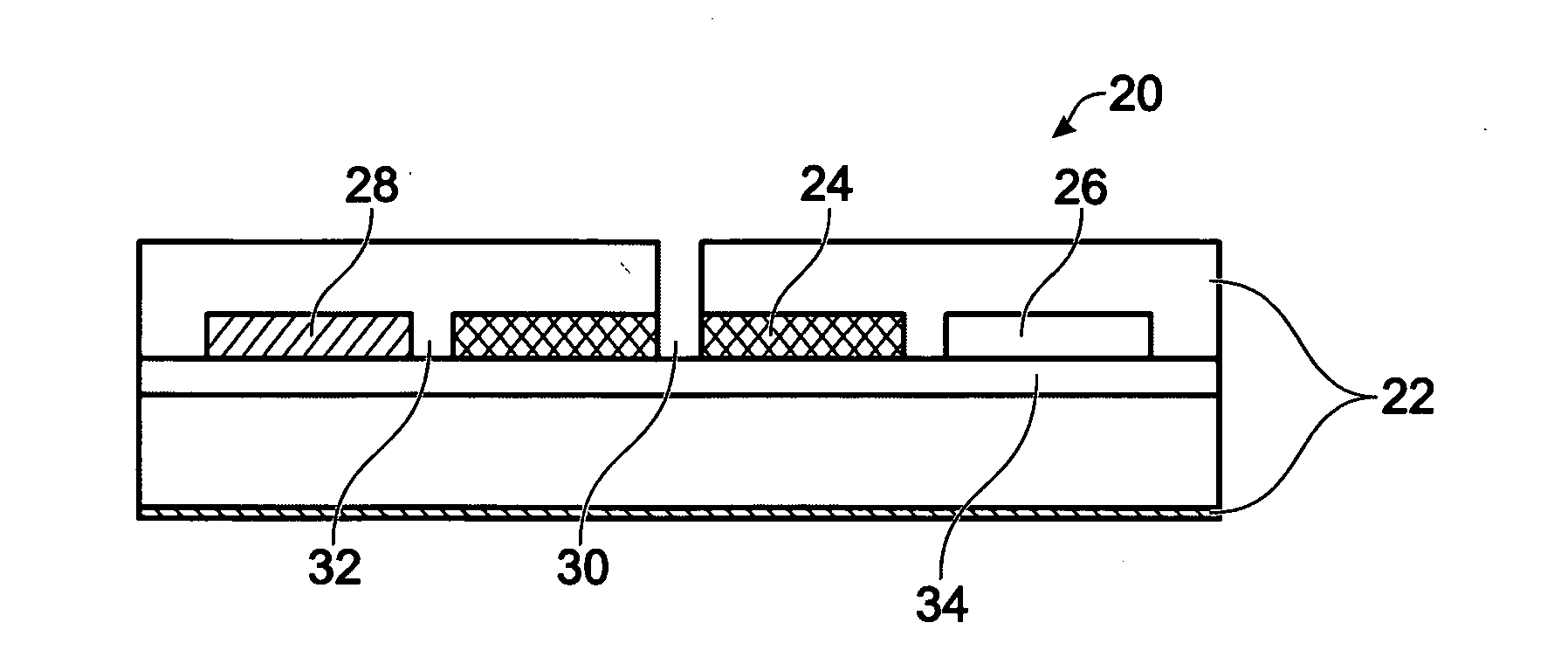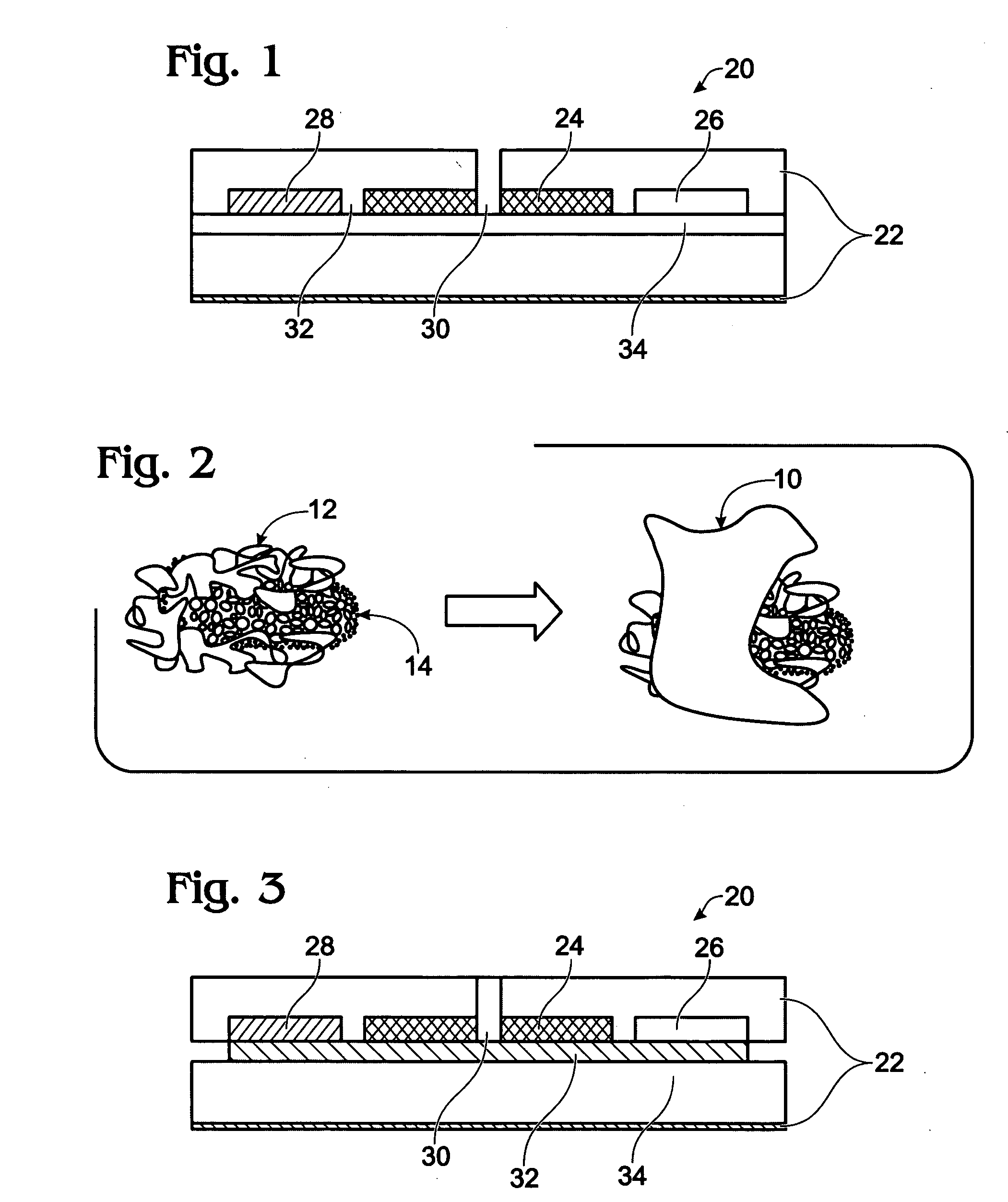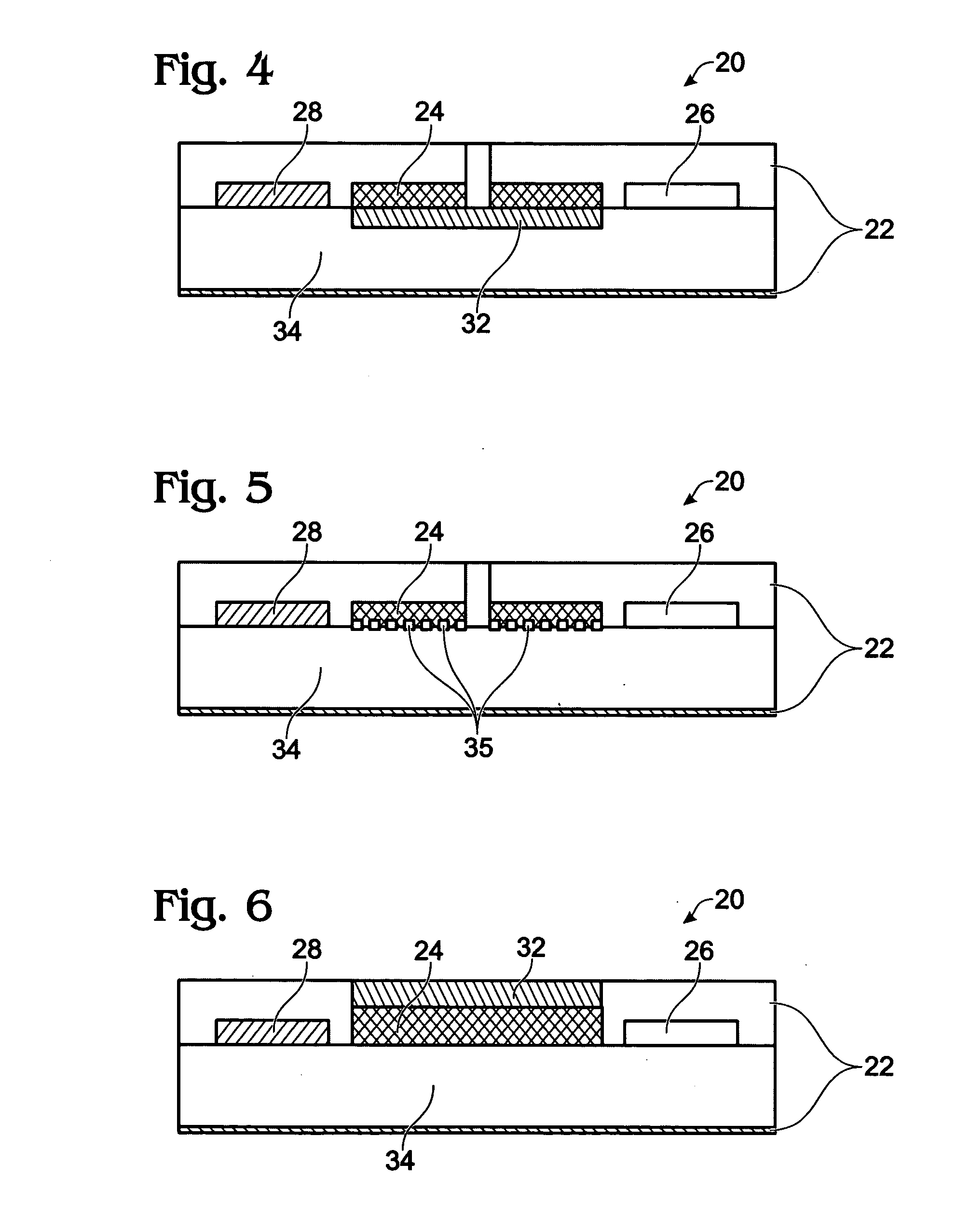Electrochemical Biosensor
a biosensor and electrochemical technology, applied in the field of electrochemical biosensors, can solve the problems of ineffective assays, many current assay systems suffer from interference, and the time and labor required for assays is so grea
- Summary
- Abstract
- Description
- Claims
- Application Information
AI Technical Summary
Benefits of technology
Problems solved by technology
Method used
Image
Examples
example 1
Detection of Influenza Viruses: Label-Free Detection
[0089]Virus Samples. Different concentration virus solutions are prepared from sticks by dilution on 0.01 M phosphate buffer (pH 6.0) containing 0.01 M KCl (assay buffer); influenza type A at different concentrations.
[0090]Electrical Measurements. The three-dimensional multi-channel electrochemical flow-thru cells were used for direct electrical detection of influenza viruses. The basic building blocks of biosensor device are biorecognition and transducing elements and the readout modality. The biosensor assembly is comprised of flow-through electrochemical cell, the AndCare 800 8-Well Sensor Strip Reader, which operates by using Intermittent Pulse Amperometry (IPA) and a special software program. The electrode assembly is located perpendicular to the flow of sample through the device. The microchannels of the working electrode contained carbon nanotubes with immobilized antibodies against influenza A virus, on which the immunochem...
example 2
Enzyme Immunoassay of Influenza A
Device Layout
[0099]The flow-thru biosensor is composed of an array of microporous working microelectrodes. Each working electrode includes microscopic channels and arrays of probes (Abs, Enzymes, DNA, cells, or receptors), which are deposited on the side surface of microchannels. Microporous working electrodes are used both as a matrix for probe immobilization and as a transducer. Sample flows through the microchannels of the working electrodes and biological recognition reactions occur within the microchannels with electrochemical detection following.
[0100]Eight well Carbon Sensor Strips (Alderson Biosciences, Inc. Beaufort, N.C.) form arrays of 8 three-electrode independent electrochemical sensor elements made on one plastic support using screen printing technology. Each electrochemical cell (a volume 300 ul) consists of carbon working, counter, and silver reference electrodes. The 8-well sensor strip is used as disposable 8-channel probes for a mu...
PUM
| Property | Measurement | Unit |
|---|---|---|
| Concentration | aaaaa | aaaaa |
| Density | aaaaa | aaaaa |
| Electrical conductor | aaaaa | aaaaa |
Abstract
Description
Claims
Application Information
 Login to View More
Login to View More - R&D
- Intellectual Property
- Life Sciences
- Materials
- Tech Scout
- Unparalleled Data Quality
- Higher Quality Content
- 60% Fewer Hallucinations
Browse by: Latest US Patents, China's latest patents, Technical Efficacy Thesaurus, Application Domain, Technology Topic, Popular Technical Reports.
© 2025 PatSnap. All rights reserved.Legal|Privacy policy|Modern Slavery Act Transparency Statement|Sitemap|About US| Contact US: help@patsnap.com



